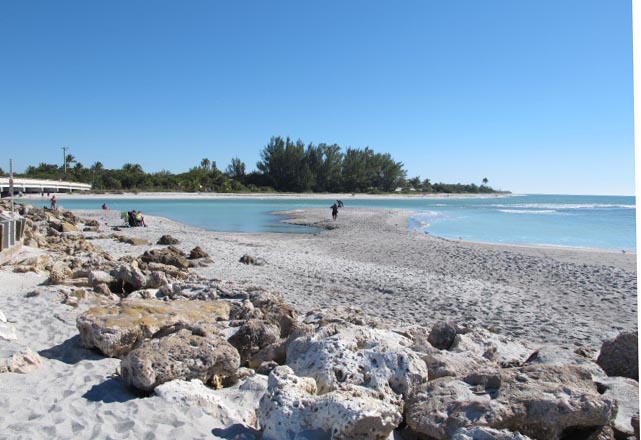
Moving to Sanibel, Florida: A Comprehensive Relocation Guide
Considering moving to Sanibel, Florida? This exclusive barrier island offers world-class shelling, pristine nature, and luxury lifestyle. With approximately 6,500 residents in 2025, Sanibel combines natural preservation with upscale living and Southwest Florida’s premier island experience.
Demographic Profile to Consider If Moving to Sanibel:
Sanibel’s 2025 population is approximately 6,500 permanent residents, though the island welcomes many seasonal visitors and second-home owners. The median age is around 65 years, reflecting strong appeal to affluent retirees. The population is approximately 95% White. Sanibel features strict development regulations preserving natural character, with no high-rises, limited commercial development, and extensive wildlife refuges. The island is world-famous for shelling beaches and the J.N. “Ding” Darling National Wildlife Refuge. Sanibel attracts wealthy retirees and environmentally-conscious residents seeking preserved natural beauty with luxury amenities. The community emphasizes conservation and maintains island exclusivity through protective regulations. Note that Hurricane Ian in 2022 significantly impacted Sanibel, with ongoing recovery and rebuilding shaping the island in 2025. Find trusted local services for moving, living, and working in Sanibel.Sanibel Relocation Directory
Cost of Living to Consider If Moving to Sanibel:
Sanibel represents ultra-premium pricing for Southwest Florida. Median home values range from $1 million to $2 million+ in 2025, with beachfront properties commanding significantly more. Post-hurricane rebuilding has influenced pricing and stock. The median household income exceeds $125,000. Rental properties average $4,000 to $8,000+ monthly for quality accommodations. Florida’s lack of state income tax attracts wealthy residents. Overall cost of living reflects Sanibel’s exclusivity, limited development, and pristine natural beauty. The island attracts wealthy retirees and affluent families seeking premier island lifestyle. Housing costs create significant exclusivity maintained by development restrictions. The combination of world-class shelling, nature preservation, and limited island space justifies premium pricing.
Economy and Job Market:
Sanibel’s economy revolves around tourism, hospitality, real estate, and conservation. Major employers include resort hotels, restaurants, the J.N. “Ding” Darling National Wildlife Refuge, and vacation rental management. Many residents are retirees or seasonal residents. Service industries support the affluent population. Some work in conservation or environmental fields. The seasonal nature creates employment fluctuations. Real estate and property management serve second-home markets. Hurricane recovery continues creating construction employment. Many working residents serve hospitality and service sectors.
Education:
Lee County School District serves Sanibel students with The Sanibel School (K-8) on the island. High school students travel to mainland Lee County. The small permanent population includes limited school-age children. Florida SouthWestern State College and Florida Gulf Coast University provide higher education on the mainland. The educational infrastructure serves the small island population.
Recreation and Lifestyle:
Sanibel offers world-renowned shelling on pristine Gulf beaches, with the unique east-west orientation creating exceptional shell deposits. The J.N. “Ding” Darling National Wildlife Refuge provides 6,400 acres of protected mangroves and wildlife viewing. Residents enjoy kayaking, biking on 25 miles of shared-use paths, fishing, and beach activities in preserved natural setting. The Bailey-Matthews National Shell Museum showcases specimens. The Sanibel Historical Museum preserves island heritage. Strict regulations limit development maintaining natural character—no buildings exceed three stories, vegetation preservation is mandated. The lifestyle emphasizes nature, conservation, and refined leisure. The tropical climate enables year-round outdoor activities. The community values environmental preservation, shelling culture, and exclusive island character. Living on Sanibel means embracing conservation over commercialization, accepting limited services, and prioritizing natural beauty.
Healthcare and Services:
Sanibel residents access healthcare primarily through facilities in Fort Myers including Lee Health hospitals. Limited medical services exist on the island. Emergency services operate with access to mainland hospitals. The area’s healthcare infrastructure serves both permanent residents and seasonal visitors, with most comprehensive care requiring mainland travel.
Transportation:
Sanibel is accessed exclusively via the Sanibel Causeway connecting to Fort Myers. The island features extensive bicycle paths. Most residents use personal vehicles, golf carts, or bicycles. Southwest Florida International Airport is approximately 30-40 minutes via the causeway. The island’s compact size and bike paths encourage alternative transportation. Traffic can occur during tourist season. The causeway toll and single access point maintain some exclusivity.
Conclusion:
Moving to Sanibel in 2025 offers exclusive island living with world-class shelling, pristine nature preserves, and luxury lifestyle. The island’s combination of protected wildlife refuges, exceptional beaches, strict conservation regulations, and upscale character makes it ideal for affluent retirees, nature lovers, and environmentally-conscious residents seeking Southwest Florida’s premier preserved island where natural beauty and conservation trump development and commercialization, with ongoing resilience creating opportunities in a recovering paradise.

